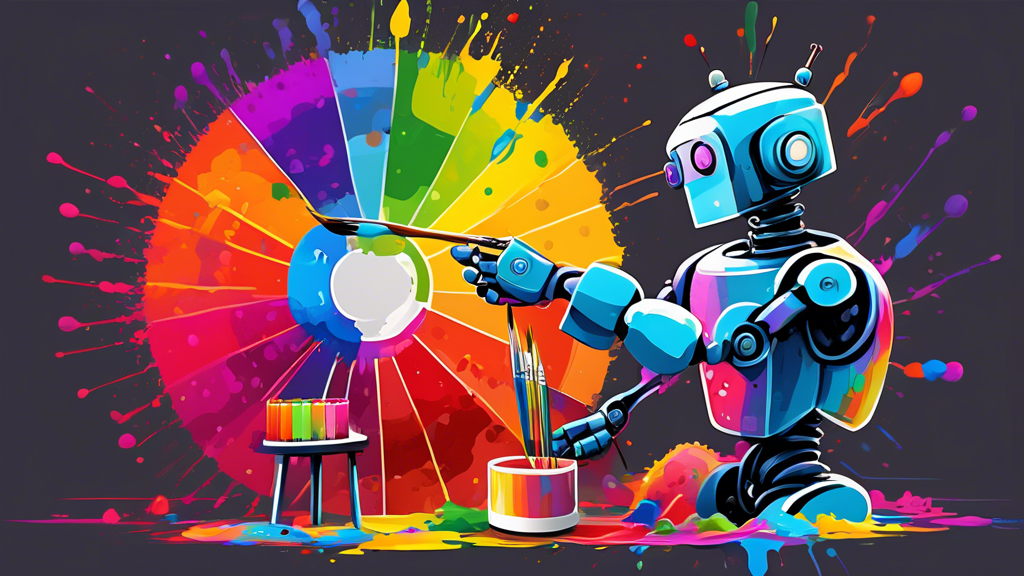Color Palette Generators: The Ultimate Guide to Finding the Perfect Hues
What is a Color Palette Generator?
A color palette generator is a digital tool that takes the guesswork out of creating harmonious and aesthetically pleasing color combinations. These handy tools are a godsend for anyone working with color, from seasoned designers to DIY enthusiasts. Whether you’re designing a website, painting a room, or planning a wedding, a color palette generator can help you find the perfect hues to bring your vision to life.
Why Use a Color Palette Generator?
Choosing the right color palette can significantly impact the overall look and feel of your project. A well-chosen palette can evoke specific emotions, enhance readability, and create a cohesive and professional appearance. Using a color palette generator offers several benefits:
- Saves Time and Effort: Manually creating color palettes can be time-consuming and challenging, especially for those without a strong understanding of color theory. Palette generators automate this process, providing instant results.
- Offers Inspiration: Stuck in a creative rut? Palette generators can spark fresh ideas and introduce you to color combinations you may not have considered otherwise.
- Ensures Harmony: These tools use color theory principles to generate palettes where each hue complements the others, resulting in a visually appealing and balanced outcome.
- Accessibility: Many color palette generators are freely available online, requiring no downloads or subscriptions. Their user-friendly interfaces make them accessible even to beginners.
How Color Palette Generators Work
While specific algorithms vary, most color palette generators operate based on fundamental color theory principles. Here’s a simplified explanation:
- Color Input: Users typically start by providing an input color, either by selecting from a color wheel, uploading an image, or entering a hex code.
- Color Model Analysis: The generator analyzes the input color based on its properties within a specific color model, such as RGB, CMYK, or HSV. This analysis helps determine the color’s hue, saturation, and lightness.
- Algorithm Application: Based on the chosen color model and the user’s preferences (e.g., complementary, analogous, triadic), the generator applies pre-set algorithms or rules to calculate related and harmonious colors.
- Palette Generation: Finally, the generator presents a palette of colors that work well together, typically displaying their respective hex codes for easy implementation in design projects.
Types of Color Palette Generators
Color palette generators come in various forms, each catering to different needs and preferences:
1. Image-Based Generators:
These generators extract dominant colors from uploaded images, creating palettes inspired by photographs, artwork, or even real-life scenes. This is an excellent option for capturing the essence of a particular visual style.
2. Color Wheel-Based Generators:
Users can interact directly with a color wheel, adjusting hues and exploring different color harmony rules, such as complementary, analogous, or triadic, to generate custom palettes.
3. Gradient Generators:
These tools focus on creating smooth transitions between colors, allowing users to customize the number of steps and the direction of the gradient for visually engaging designs.
4. Random Palette Generators:
For those seeking a spark of unexpected inspiration, random palette generators offer a curated selection of unique and eye-catching color combinations.
Key Features to Look for in a Color Palette Generator:
With countless options available, consider these features when selecting a color palette generator:
- Ease of Use: The interface should be intuitive and user-friendly, allowing for effortless navigation and customization.
- Color Model Support: Ensure the generator supports the color model relevant to your project, whether it’s RGB for web design or CMYK for print.
- Customization Options: Look for features that allow you to fine-tune the generated palettes, such as adjusting color values, adding or removing colors, and saving palettes for later use.
- Harmony Rules: Choose a generator that offers various color harmony rules, providing flexibility in exploring different aesthetic styles.
- Color Blindness Accessibility: Some generators include features that simulate color blindness, ensuring your designs are accessible to a wider audience.
Beyond Aesthetics: Practical Applications of Color Palette Generators
While aesthetics play a vital role, color palette generators extend their usefulness beyond creating visually appealing designs:
1. Branding and Marketing:
Establish a cohesive brand identity by using a consistent color palette across all marketing materials, from logos and websites to social media graphics and presentations. Palette generators help maintain brand consistency and enhance brand recognition.
2. Data Visualization:
When presenting data visually, choosing the right color palette is crucial for clarity and effective communication. Use generators to create palettes that highlight important data points, differentiate categories, and improve the overall readability of charts and graphs.
3. User Interface (UI) Design:
In UI design, color plays a vital role in guiding user interactions, providing feedback, and creating a positive user experience. Palette generators assist in selecting appropriate colors for buttons, menus, and other UI elements to ensure usability and visual appeal.
Choosing the Right Color Palette: Tips and Best Practices
Finding the perfect color palette involves a blend of personal preference, project requirements, and an understanding of basic color principles:
- Define Your Purpose: Before generating palettes, establish the goal you want to achieve with your color choices. Are you aiming for a sense of calm, energy, sophistication, or playfulness?
- Consider Your Audience: Different demographics and cultural backgrounds may respond differently to certain colors. Keep your target audience in mind when making color selections.
- Test and Iterate: Don’t settle for the first palette you generate. Experiment with different options, adjust color values, and test the palettes in the context of your project to see how they perform.
- Don’t Overlook Contrast: Ensure sufficient contrast between text and background colors for optimal readability, especially for web design and digital content.
- Seek Inspiration: Explore design websites, magazines, and nature itself for color inspiration. Pay attention to color combinations that catch your eye and analyze why they work effectively.
Conclusion: Unlocking the Power of Color with Palette Generators
Color palette generators are invaluable tools for anyone working with color, from professional designers to individuals seeking to add a touch of aesthetic harmony to their projects. By leveraging the power of color theory and providing an intuitive interface, these generators simplify the often-daunting task of creating visually pleasing and effective color schemes. Whether you’re embarking on a large-scale design project or simply looking to refresh the look of your living room, exploring the world of color palette generators can open up a world of creative possibilities and help you unlock the true potential of color.






No comments! Be the first commenter?